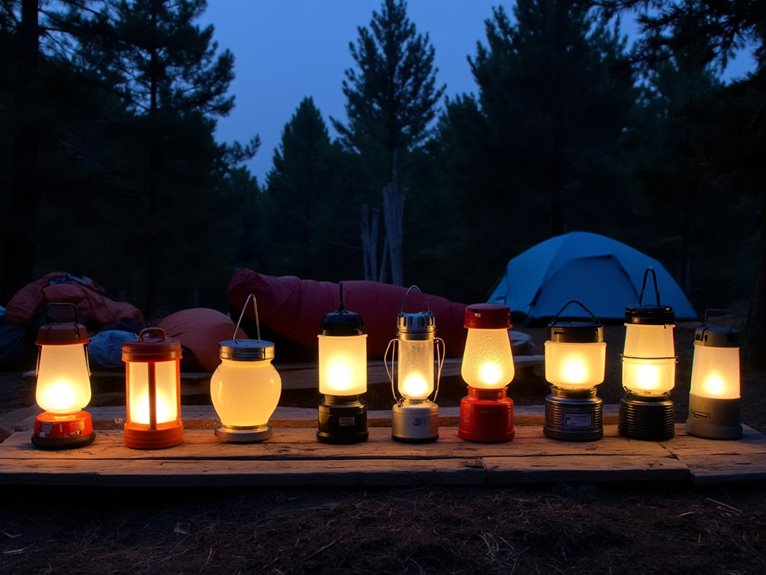How to Use Claypot for Cooking?
Select a claypot suitable for your cooking method, considering material, size, and durability. Prep your claypot by washing, drying, and seasoning it with oil and low-heat oven treatment. Choose from various cooking techniques like steaming, stewing, grilling, and slow-cooking to reveal rich flavors and tender textures. Proper care and maintenance are essential to extend the life of your claypot. By following these basics, you'll be on your way to crafting mouthwatering claypot meals. As you delve into the world of claypot cooking, discover the secrets to elevating your dishes to new heights.
We are supported by our audience. When you purchase through links on our site, we may earn an affiliate commission, at no extra cost for you. Learn more. Last update on 1st January 2026 / Images from Amazon Product Advertising API.
Choosing the Right Claypot
When selecting a claypot, consider the type of cooking you plan to do most often, as different materials and designs are better suited for specific culinary pursuits, such as slow-cooked stews, roasted meats, or fragrant curries.
Claypots made from earthenware or terra cotta are ideal for slow-cooked dishes, while those made from ceramic or stoneware are better suited for high-heat cooking methods.
Additionally, consider the size of the claypot, as larger pots are better for batch cooking, while smaller pots are perfect for intimate gatherings.
Finally, think about the durability and maintenance requirements of the claypot, as some materials may require seasoning or special care.
Preparing Your Claypot for Use
Before its inaugural use, a new claypot requires a simple yet vital preparation process to prevent it from cracking or breaking prematurely and to make it ready for cooking.
Start by washing the claypot in warm soapy water to remove any impurities. Rinse thoroughly and dry with a soft cloth.
Next, apply a thin layer of cooking oil to the interior and exterior surfaces, allowing it to absorb fully. This process, known as 'seasoning,' helps prevent the clay from drying out and reinforces the pot's durability.
Finally, place the claypot in a low-temperature oven (150°C) for an hour to set the seasoning.
Your claypot is now ready for its first cooking adventure!
Cooking Techniques for Claypot
When it comes to cooking with a claypot, mastering various techniques is key to unlocking its full potential.
From slow-cooked braises to gentle, low-heat simmering, the right approach can elevate the flavors and textures of your dishes.
In this section, we'll explore the essential cooking methods and techniques to get the most out of your claypot.
Claypot Cooking Methods
Mastering various claypot cooking methods is essential to tap the full potential of this ancient cooking vessel, as it allows home cooks to venture into a wide range of flavors and textures.
One popular method is steaming, which retains nutrients and delicate flavors. Simply add aromatics and ingredients to the claypot, then steam over boiling water.
Another method is stewing, where ingredients simmer gently in liquid, resulting in tender, fall-apart textures.
Grilling and roasting are also options, allowing for caramelized crusts and smoky flavors.
Finally, slow-cooking enables rich, depthful flavors to develop over time.
Braising in Claypot
Braising in a claypot brings rich, comforting flavors to the forefront, as tougher cuts of meat surrender to tender, fall-apart textures in a richly flavored liquid. This cooking technique is ideal for claypots, as the even heat distribution and moisture retention create a perfect environment for slow-cooked meals.
Choose the right cut of meat: Opt for tougher, collagen-rich meats like short ribs, chuck roast, or lamb shanks.
Brown the meat: Sear the meat in a hot skillet before adding it to the claypot to intensify flavor and texture.
Select aromatics: Onions, carrots, and celery are classic braising aromatics, but feel free to experiment with other vegetables and spices.
Be patient: Allow the dish to simmer slowly, letting the flavors meld together and the meat tenderize to perfection.
Low-Heat Simmering
As the rich flavors of a slow-cooked braise meld together, it's time to explore the gentle art of low-heat simmering, where the claypot's heat retention and moisture control come into their own.
This technique is perfect for delicate dishes that require a soft, consistent heat.
To master low-heat simmering, start by bringing your claypot to a gentle boil, then reduce the heat to a whisper, maintaining a temperature of around 160°F to 180°F (71°C to 82°C).
This gentle heat will coax out the flavors of your ingredients, while the claypot's moisture control safeguards that your dish remains tender and juicy.
With low-heat simmering, the possibilities are endless – think tender stews, fall-off-the-bone meats, and velvety soups.
Claypot Care and Maintenance
Proper care and maintenance are essential to extending the lifespan of your claypot and ensuring it continues to perform excellently.
By following a few simple guidelines, you can keep your claypot in top condition and enjoy delicious meals for years to come.
Avoid using abrasive cleaners or scouring pads, as they can scratch the claypot's surface.
Never put your claypot in the dishwasher, as the high heat and harsh detergents can damage the material.
Dry your claypot thoroughly after washing to prevent water spots and bacterial growth.
Apply a thin layer of cooking oil to the claypot's surface after cleaning to maintain its non-stick properties.
Best Dishes for Claypot Cooking
From hearty stews to flavorful stir-fries, claypot cooking offers endless possibilities for crafting a wide range of delectable dishes that are both nourishing and visually appealing.
One of the most popular and easy-to-make dishes is a classic claypot chicken, where tender chicken, vegetables, and aromatic spices come together in a harmonious blend of flavors.
Another favorite is a fragrant Thai green curry, where coconut milk, lemongrass, and chilies meld together to create a rich and creamy sauce.
For a vegetarian delight, try a vibrant and colorful vegetable tagine, where an assortment of vegetables, dried fruits, and spices simmer together in a flavorful broth.
Tips for Perfect Claypot Meals
Mastering a few simple techniques can transform your dishes from ordinary to extraordinary, and it all begins with selecting the right ingredients and understanding the unique heat distribution properties of your clay vessel. By doing so, you'll access the full potential of this ancient cooking method.
Preheat your claypot over low heat for 10-15 minutes to achieve uniform heat distribution.
Saute onions, garlic, and ginger to bring out the natural flavors of your ingredients.
Combine salty, sweet, sour, and umami flavors to create a harmonious taste experience.
Cook ingredients in batches to prevent steaming instead of browning.
These essential tips will refine your claypot cooking:



